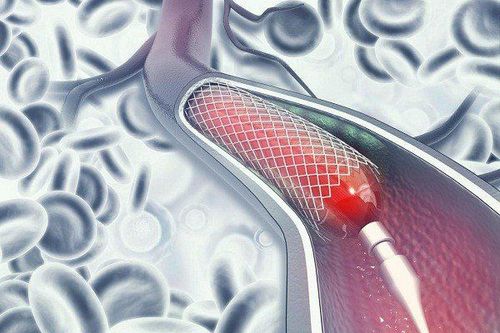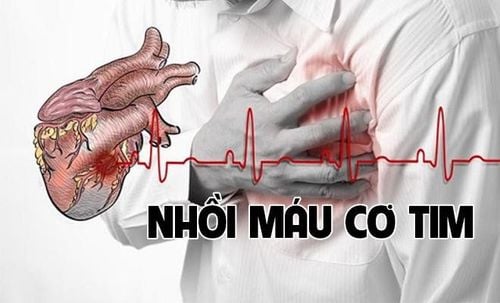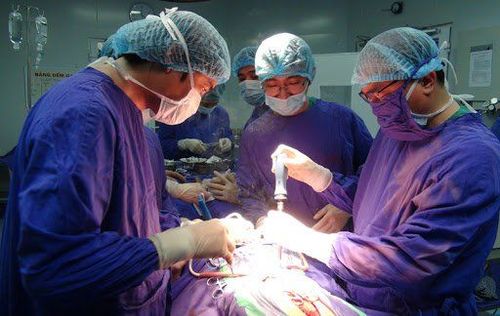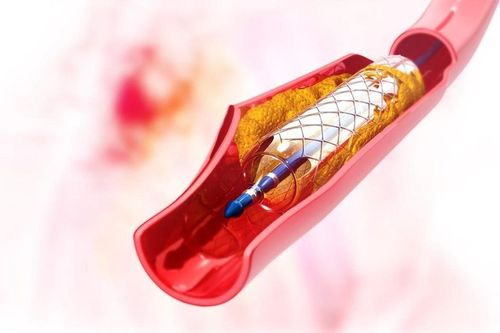This is an automatically translated article.
The article is written by Master, Doctor Nguyen Van Phong, Doctor of Internal Medicine and Cardiovascular Intervention, Cardiovascular Center - Vinmec Times City International General HospitalWhen advanced atherosclerotic plaque narrows the coronary artery > 70%, the coronary artery is not able to supply oxygen to the myocardium, especially during exercise, exercise or strenuous work. This causes myocardial ischemia with manifestations of angina pectoris, fatigue, shortness of breath...
1. How is coronary stenting performed?
A small catheter with a balloon attached and a metal holder (stent - located on the outside of the balloon) is inserted through the radial artery at the wrist or femoral artery to the patient's coronary artery. When the coronary artery is narrowed, the balloon is inflated, causing the metal frame (stent) to expand and press against the artery wall to widen the artery wall to a normal diameter to help blood flow back to normal. often.2. Difference between coronary angioplasty and coronary stenting
In case the degree of coronary stenosis is too severe, the doctor will conduct angioplasty of the narrowed coronary artery before temporarily widening the coronary artery lumen, making it easier for the ballooning process with stents to pass through the narrow site to progress. stent placement in the patient.3. Lifespan of coronary stents

Stent mạch vành có thể tồn tại vĩnh viễn trong lòng động mạch (trừ stent tự tiêu)
Factors affecting the long-term effectiveness of coronary stents:
Stent thrombosis: if the patient forgets to take the drug, if the patient's condition reduces tolerance to anticoagulants, blood clots will form in the stent lumen. Coronary artery leading to acute stent occlusion Atherosclerotic plaque continues to grow: as risk factors for atherosclerosis persist, eg age, gender, family factors, smoking, obesity, disease combination - diabetes, hypertension, fatty blood... Type of stent used: drug-eluting stents will reduce the risk of re-stenosis higher than conventional stents Cardiovascular Center - General Hospital International Vinmec Times City is applying very effectively and safely techniques of coronary angiography, balloon angioplasty, angioplasty and coronary stenting; meet the needs of timely and effective examination and treatment of acute diseases such as acute myocardial infarction, cardiogenic shock, bradyarrhythmias requiring emergency medical equipment.
To register for cardiovascular examination and treatment at Vinmec Times City International Hospital, customers can call Hotline: 0243 9743 556 or register online HERE.














